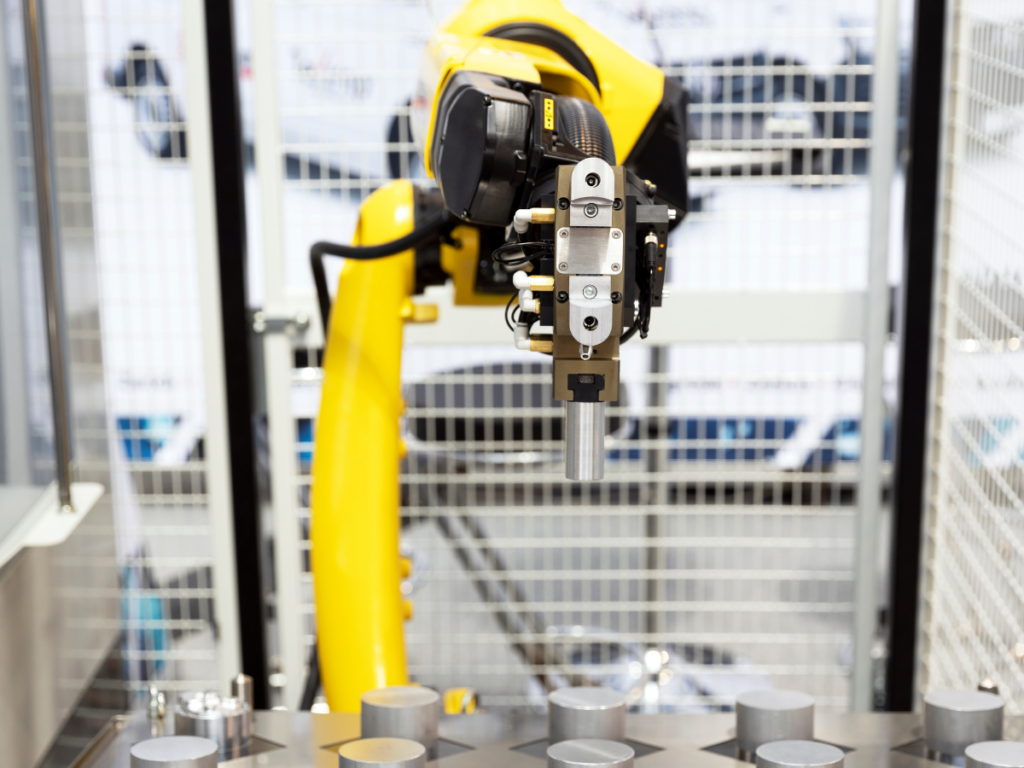Machine Tending Solutions Aid Life Science Manufacturers
Life sciences manufacturers feel mounting pressure as they are tasked with producing medical devices, pharmaceuticals, gene therapies, biologics and other necessities for human life and patient care in an exacting, sterile and compliant manner while also managing the demands of an aging population, ever-changing production runs, labor shortages and tighter regulatory requirements.
While the life sciences industry was traditionally slow to adopt automation, these significant challenges are prompting manufacturers in this sector to rethink robotics. Specifically, machine tending robots are one of the latest technologies in which life sciences manufacturers are investing in order to remain competitive.
A Word about Life Sciences
Life sciences manufacturing encompasses the production of a broad range of products that are intended to improve life for humans and animals, including:
- Medical devices
- Gene therapies
- Biological products
- Biomedicines
- Pharmaceuticals
- Personalized medicines
- Nutraceuticals
- Implants
- Prosthetics
Because many of these products have a direct impact on quality of life for humans and animals, life sciences manufacturers are subject to stringent regulatory requirements demanding that production occurs in sterile, cleanroom environments and is trackable, traceable and consistent from run to run. In addition, this is a fast-moving industry in which there is pressure to get products to market quickly; efficiently produce smaller runs of personalized medicines, devices and other items; and remain agile as new technologies and developments occur on a daily basis. All this requires life sciences manufacturers to produce high-quality, consistent products as efficiently and with as much flexibility as is possible.
Robotic Machine Tending Plays a Starring Role

Fortunately, automation and robotics provide the efficiency and agility needed to meet these demands and overcome the challenges of the burgeoning life sciences manufacturing industry. Robotic automation can assist life sciences manufacturers by maximizing the efficiency and accuracy of tasks such as assembly, sorting, kitting, inspection, packaging and machine tending operations that were previously handled manually.
Automating these procedures in life sciences manufacturing guarantees that the tasks are not only performed with more efficiency than is possible with human operators, but also with more consistency and precision and with higher levels of sterility because less human intervention occurs in the manufacturing process.
Not surprisingly, machine tending is one of the most worthwhile investments for robotics in the life sciences industry. This is because when performed manually, machine tending – which involves loading and unloading raw materials, initiating the production cycle, unloading completed parts or products, finishing and cleaning end products and then restarting the process from the beginning – is labor intensive, time consuming, repetitive and prone to human error and inconsistencies.
However, applying robotic machine tending technologies to these operations provides a wealth of benefits, especially increased efficiency, productivity and throughput as automation is inherently faster and more effective than human employees who move slower and require breaks, resulting in bottlenecks and other inefficiencies. The ability to optimize efficiency helps life sciences manufacturers get their products to market as fast as possible while reducing costs associated with labor and reduced productivity.
In addition, by removing manual laborers from these tasks, it’s also possible to remove the element of human error, which means that the process will produce higher quality products with less material waste and scrap and minimize the costs associated with faulty products that do not meet the intense quality control standards required throughout the life sciences industry.
Further, machine tending robots can be programmed to perform tasks such as loading, unloading, cleaning, sanding, deburring and finishing in a consistently precise and repeatable fashion. Precision and repeatability are necessary in the life sciences industry in order to comply with government regulations and industry specifications that demand exacting quality and consistency among products.
The use of robotic machine tending will also improve sterility and cleanliness of the manufacturing process as equipment that is specifically designed for sterile and cleanroom environments reduces the risk of contamination of products. In addition, replacing human workers with robotics in these operations further reduces the chances of contaminants being introduced into the cleanroom environment as employees come and go for breaks and shift changes and bring with them the risk of contamination each time.
A Trusted Supplier for Life Sciences Manufacturing
Life sciences manufacturers should implement machine tending robotics to maximize efficiency, boost quality, comply with regulatory mandates for sterility and consistency and become more agile and flexible. However, because life sciences products have a significant impact on patient care and human and animal life, it is crucial that life sciences manufacturers select their automation from a supplier with expertise in this challenging industry. JHFOSTER offers specialized solutions that cater to the demanding needs of the life sciences manufacturing sector and can draw on its experience to assist life sciences manufacturers with meeting their unique needs. Call JHFOSTER today to learn more about the value of robotics in life sciences manufacturing.
